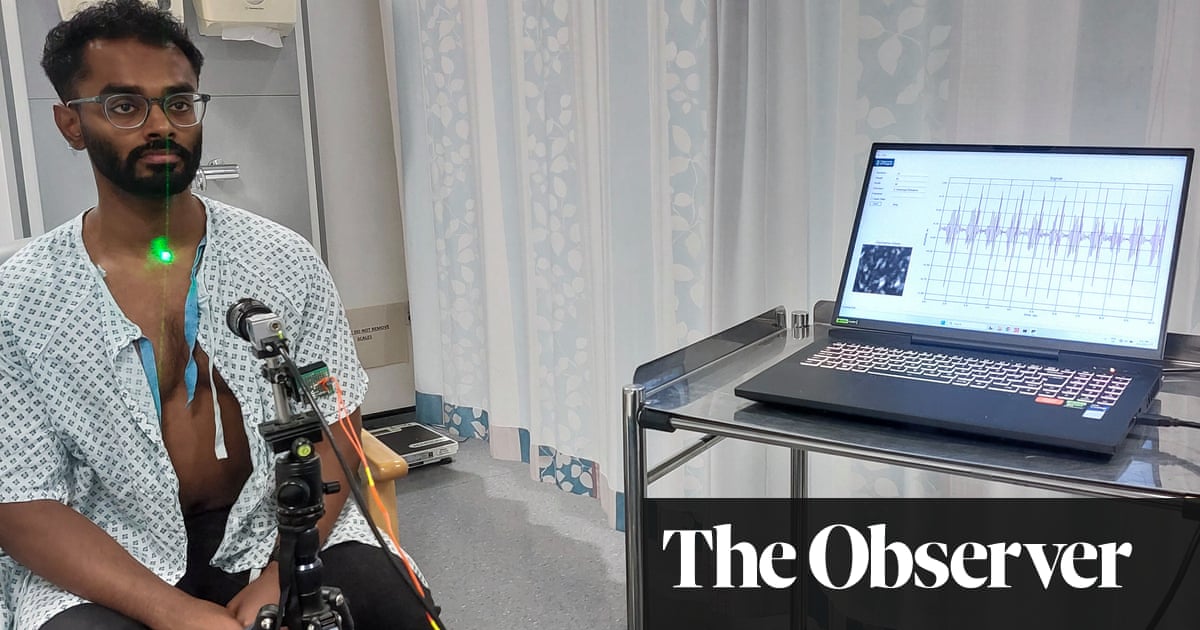A throat-based AI laser has the potential to replace traditional stethoscopes in reading heartbeats.

Researchers have created a laser-based camera that can detect a person’s heartbeat from a distance and identify potential indicators of cardiovascular diseases.
According to researchers at Glasgow University, a system utilizing AI and quantum technologies could revolutionize the way we track our health.
According to Professor Daniele Faccio from the university’s Advanced Research Centre, this technology has the potential to be installed in booths at shopping malls. This would allow individuals to receive a rapid heart rate reading, which could then be recorded in their online medical records.
Instead, the person suggested installing laser heart monitors in a home as a way to monitor various health indicators in a household setting. Additional devices would be used to monitor abnormal blood pressure or small changes in walking patterns, which could be an early indication of Alzheimer’s disease.
Faccio stated that being able to monitor someone’s heart rate from far away would be highly beneficial. This is because any abnormalities, such as murmurs or a too fast or slow heartbeat, could serve as an early warning sign for potential stroke or cardiac arrest.
Currently, medical professionals utilize stethoscopes to observe heart rhythms. Developed in the 19th century by French surgeon René Laënnec (to avoid having direct contact with a female patient’s chest), a stethoscope is composed of a circular resonator that picks up internal sounds when pressed against a person’s body. These sounds are then transmitted and amplified through tubes and earpieces for the listener to hear.
According to Faccio, using a stethoscope correctly takes practice. Applying too much pressure on a patient’s chest can interfere with the heartbeat signals. Additionally, it can be challenging to identify background murmurs that are indicative of underlying issues.
Faccio and his team created a system that utilizes high-speed cameras to capture images at a rate of 2,000 frames per second. A laser is directed onto a person’s throat and the resulting reflections are utilized to precisely measure the movement of their skin as their main artery expands and contracts with the flow of blood. These movements are extremely small, measuring in billionths of a meter.
This level of precision is impressive, however, monitoring these small variations alone would not suffice to detect a person’s heartbeat. “Larger movements, such as breathing, occur on a person’s chest and would overpower the signals from their heartbeat.”
Faccio explained that AI plays a crucial role in this process. By utilizing sophisticated computing technology, we are able to isolate the vibrations produced by a person’s heartbeat, despite its faint intensity compared to other sounds coming from their chest. The AI specifically targets the frequency range of the human heartbeat to effectively filter out any other distractions.
The data from the signals can help medical professionals identify variations in heart rate, not just compared to the average for a population, but based on an individual’s unique cardiac patterns. This feature is particularly useful in detecting any changes or abnormalities in the heart, according to Faccio. Their team has created a startup called LightHearted AI and is currently looking for investors to further advance their devices.
According to Faccio, this system is extremely precise. It has the ability to identify you among 10 other people who live in the same house by using a laser to analyze your throat and heartbeat from its reflected light. It can also be used for biometric identification purposes.
The primary purpose of this technology, which we anticipate will be available next year, will be to easily and quickly measure heartbeats outside of hospital or GP settings. The potential advantages could be significant.
Source: theguardian.com


